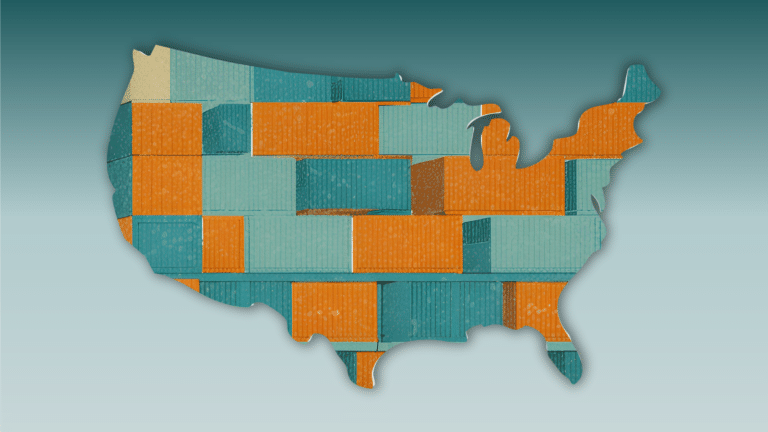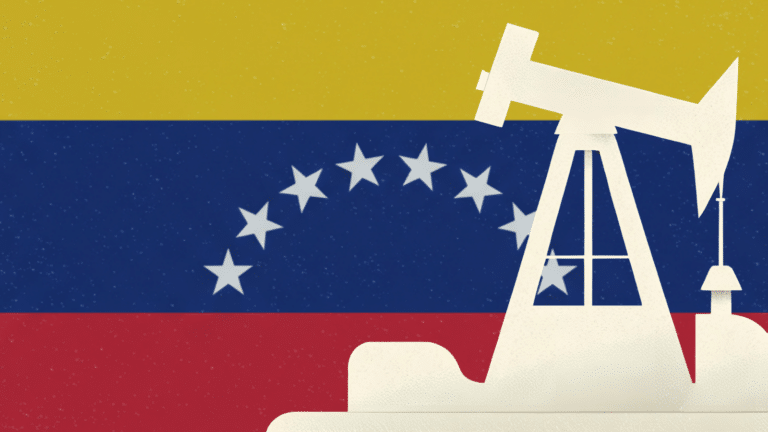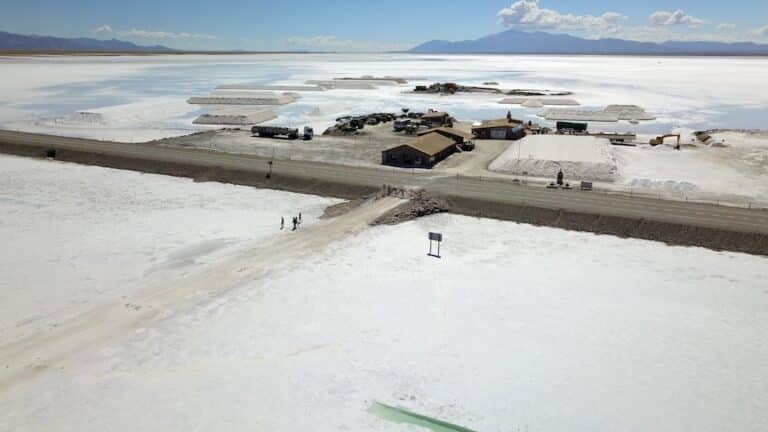This Energy Explained post represents the research and views of the author. It does not necessarily represent the views of the Center on Global Energy Policy. The piece may be subject to further revision. Contributions to SIPA for the benefit of CGEP are general use gifts, which gives the Center discretion in how it allocates these funds. Rare cases of sponsored projects are clearly indicated.
For a full list of financial supporters of the Center on Global Energy Policy at Columbia University SIPA, please visit our website at Our Partners. See below a list of members that are currently in CGEP’s Visionary Circle. This list is updated periodically.
In an escalation of trade tensions, Donald Trump threatened to double tariffs on Canadian steel and aluminum to 50 percent this week. This increase would have been in response to Ontario’s 25 percent surcharge on electricity exports to the United States. The threat rattled markets and several major indices continued to decline after the announcement, increasing fears of a recession[1]. [MRR1] While Trump has at least temporarily backed down from the plan to raise the tariff to 50%, the 25% aluminum and steel import tariffs are still a big blow to North American supply chain interdependency and resilience. The following Q&A discusses the impact of Trump’s tariffs on US-Canada minerals trade and its ripple effects on supply chains, prices, and policy. It finds that the tariffs are costly and directly undermine North American supply chain resilience, as no immediate substitute sources are available, domestically or from foreign allies.
1) How have the United States and Canada collaborated on minerals and metals in the recent past?
Recent years have seen the United States and Canada deepen cooperation on critical minerals in response to geopolitical pressures and the need for supply chain resilience, even during the first Trump administration. Under the U.S.-Canada Joint Action Plan on Critical Minerals (2020), both governments committed to strengthening cross-border supply chains, co-investing in extraction and processing, and aligning policies to support North American industrial capacity[2]. [MRR2] There is extensive cross-border investment in critical minerals. For example, about 323 Canadian companies have invested over $45 billion in the US mining sector.[3]
2) How large is the US-Canada minerals and metals trade?
There is a huge interdependence between both countries. The two countries are each other’s biggest export and import partners. In 2023, out of $57 billion in total minerals and metals exports, Canada exported $38 billion in minerals to the United States, or two-thirds of its total exports. In the same year, out of $114 billion in minerals and metals exports, the United States exported $28 billion to Canada, or about 25 percent of total exports. This figure also includes non-critical minerals like iron.[4]
3) How much will the new tariffs cost?
Canada exports $13 billion of aluminum to the United States and $17 billion of iron and steel. Those now must pay 25 percent tariffs, implying an additional cost of $7.5 billion annually. When other minerals and metals are required to pay the 10 percent tariff that would apply to them, the costs will go up further. Canada exported $4 billion of copper in 2024 and $1.5 billion of nickel.[5] These costs will undoubtedly impact the downstream producers, affect their competitiveness, the ability to offer jobs, and finally, the costs for the final consumer via inflationary trends.
4) Can Canadian minerals and metals be substituted by domestic production?
Not really. In terms of reserves and production, the United States and Canada are largely complementary. The United States holds significant global reserves in molybdenum (23 percent), tellurium (11 percent), lithium (4 percent) and silver (4 percent). Canada adds to that with significant reserves of niobium (9 percent), selenium (6 percent), titanium (4 percent), and lithium (3 percent). For other strategic minerals, the countries each hold smaller shares of global reserves, but they often produce more. If critical minerals security of supply is truly a strategic goal, then it is important to protect that production and facilitate, at the local, national, and regional level, responsible expansions where feasible. In terms of production, the complementarity is largely similar. The United States produces significant global shares of beryllium (56 percent), molybdenum (14 percent), zirconium (7 percent), zinc and copper (6 percent each), and silver (4 percent). Canada is a significant producer of niobium, cadmium, palladium (8 percent each), nickel, aluminum, tellurium, indium (4 percent each), selenium (3 percent), and copper (2 percent)[6].
5) Can Canadian exports be substituted by other foreign partners?
In some cases, yes, but those supplies would not necessarily come from partners that the United States has historically been keen on relying on. Canada was the second largest source of iron and steel for the United States after China. Canada was the largest source of aluminum for the United States, with China in second place. Canada was the largest source of nickel for the United States, followed by Russia. Copper is a different case. Canada is second to a historically US-allied country, Chile, but Chilean copper production has been struggling and cannot easily pick up the slack[7].
6) Has the uncertainty already impacted metals markets?
Market volatility has already increased due to the tariffs. Steel and aluminum prices have experienced spikes, leading to supply uncertainty and increased costs for US stakeholders. The combination of tariffs and retaliatory measures from Canada and Mexico has disrupted supply chains across multiple industries. While price effects depend on long-term policy implementation, historical precedent suggests that import tariffs on metals often result in higher costs for downstream manufacturers. The uncertainty surrounding compliance with USMCA and additional tariff exemptions has further complicated investment decisions, particularly in the US industrial sector[8].[MRR3]
7) What are the potential impacts of the Trump tariffs beyond prices?
The tariffs could have broader implications for North American supply chain integration, industrial competitiveness, and workforce mobility. The US mining and refining sectors have already faced talent shortages due to underinvestment, leading experienced professionals to retire or move abroad[9]. The tariffs could also discourage Canadian professionals from relocating to the United States, further exacerbating domestic capacity constraints. Additionally, higher costs for raw materials could reduce North American competitiveness in sectors such as batteries, clean energy, and defense. Retaliatory measures from Canada and Mexico could also affect broader trade relations, creating additional uncertainty for investors.
8) What steps could be taken to create a more collaborative policy path for the United States with Canada?
The Trump administration could take several steps to strengthen minerals cooperation with Canada. First, aligning regulatory frameworks under the USMCA could facilitate cross-border investment in mineral extraction and processing. Second, expanding joint stockpiling and refining initiatives, including co-financing projects through mechanisms such as the Defense Production Act, would enhance supply chain security. Third, ensuring that US legislation—such as the IRA and CHIPS Act—consistently recognizes Canadian minerals as “domestic” would remove trade barriers. Finally, fostering workforce development initiatives, including mutual recognition of mining and refining certifications, could help address industry-wide skill shortages.
CGEP’s Visionary Circle
Corporate Partnerships
Occidental Petroleum
Tellurian
Foundations and Individual Donors
Anonymous
Anonymous
Aphorism Foundation
the bedari collective
Children’s Investment Fund Foundation
David Leuschen
Mike and Soa Segal
Kimberly and Scott Sheffield
Bernard and Anne Spitzer Charitable Trust
Ray Rothrock
[1] https://www.theguardian.com/us-news/2025/mar/11/trump-double-canada-tariffs
[2] https://www.brookings.edu/articles/broad-support-for-prioritizing-responsible-critical-minerals-development/
[3] https://natural-resources.canada.ca/maps-tools-and-publications/publications/minerals-mining-publications/canadian-mining-assets/19323
[4] https://criticalmaterials.energypolicy.columbia.edu/
[5] https://criticalmaterials.energypolicy.columbia.edu/
[6] https://www.brookings.edu/articles/broad-support-for-prioritizing-responsible-critical-minerals-development/
[7] https://criticalmaterials.energypolicy.columbia.edu/
[8] https://www.cato.org/blog/trumps-tariff-walkback-bows-economic-reality-leaves-plenty-problems
[9] https://www.smenet.org/What-We-Do/Technical-Briefings/Workforce-Trends-in-the-US-Mining-Industry











